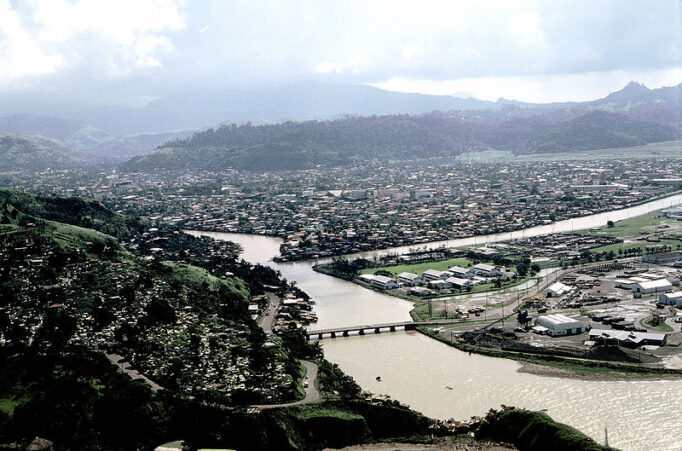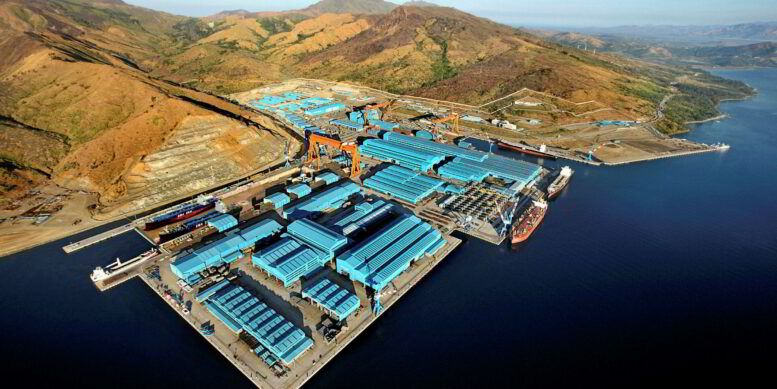I arrived in the Philippines for the first time in early 1972, landing at Clark Air Base before experiencing the breathtaking bus ride to the U.S. Naval Base Subic just outside Olongapo City. I was to meet the USS Kitty Hawk CVA-63 on its next port of call, the first of many deployments during the Viet Nam campaign. During my wait for almost a month to catch the ship, I enjoyed getting to know the Philippines, Naval Base Subic, and Olongapo City very well.
The eruption of Mt. Pinatubo in 1991 changed everything. In 1992, the U.S Naval Base Subic permanently closed and was transformed into a very successful Subic Free Trade Zone of which my family and I enjoyed very much.
After the closure of the U.S. Naval Base Subic, as reported by One News, 80 to 100 U.S. ships still visit the Philippines annually.
Even before the American and Australian companies expressed interest in Hanjin shipyard, U.S. Navy ships have been making port calls to Subic, including massive aircraft carriers and nuclear-powered attack submarines.
The once busy Hanjin Shipyard is across the bay from the Free Trade Zone but unfortunately after the global economic crash of 2008, and business downturns over the next years, it filed for bankruptcy causing over 30,000 skilled Filipino workers to lose their jobs In January 2019.
Fast forward to present day August 2020, a new dawn is spreading over Subic Bay and the Philippines.
An Australian shipbuilding company, Austal, and a U.S. financial conglomerate, Cerberus, are in the final process of an agreement to assume control over Hanjin Property with the intention of repurposing the entire complex into two separate entities. It has been reported the repurposing of Hanjin may take about one year but most, if not all, of the 30,000 + unemployed skilled Filipino workforce will be rehired to a more stable business platform.

Austal has multiple contracts to build military ships for the Philippine Navy. Cerberus is the parent company for Dyncorp, which is a major contractor maintaining and repairing U.S. military ships. There is a possibility dry-docks once installed in the prior naval base will return. Should that happen, ship traffic is expected to increase.
There is also interest for acquisition of the two small islands, Grande and Chiquita, just offshore from the Hanjin complex.
The Philippine Navy has interest to build a Philippine Naval Base Subic on 100 hectares adjacent to the Hanjin complex.
Subic Bay has one of the best port facilities in the world having naturally deep and secure harbors.
Additional great news is the VFA (Visiting Forces Agreement) will remain in effect. VFA was approved by the Senate in 1999.
As reported by UCA News (Union of Catholic Asian News) on 17-April-2020, a groundbreaking ceremony was held for the building of a U.S. military facility at a Philippine Air Force base in the province of Pampanga, north of Manila. The building of the facility is part of an agreement signed in 2014 known as the Enhanced Defense Cooperation Agreement (EDCA). The military deal allows the building of U.S. military facilities inside Philippine military bases.
“EDCA is an executive agreement now under the umbrella of the U.S. law called the Asian Reassurance Initiative Act (ARIA) of 2018, and was deemed and recognized as legal by both countries – the U.S. and the Philippines. However, the U.S. can only build “temporary” military facilities, meaning, the structures built are not permanently attached to the ground. The technicality in setting up such a structure lies in the design,“ says VAdm Emilio C Marayag AFP (Ret).
It appears to me that the agreements being discussed, and those already in place, are proof the Philippines is heading in the right direction paving a path towards economic recovery, regional stability, and sovereign security even during this Covid-19 virus pandemic.
It’s a win for the country and the entire region.
About the author: Timothy Muelder is a retired Facilities Officer of the U.S. State Department.
